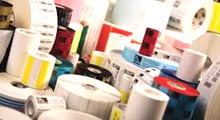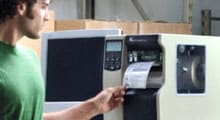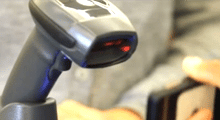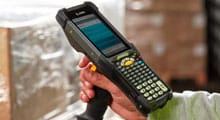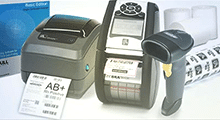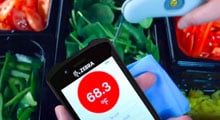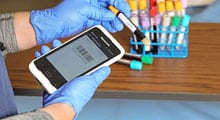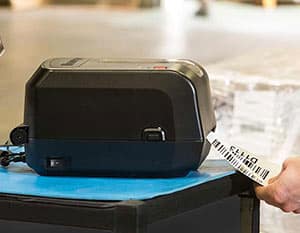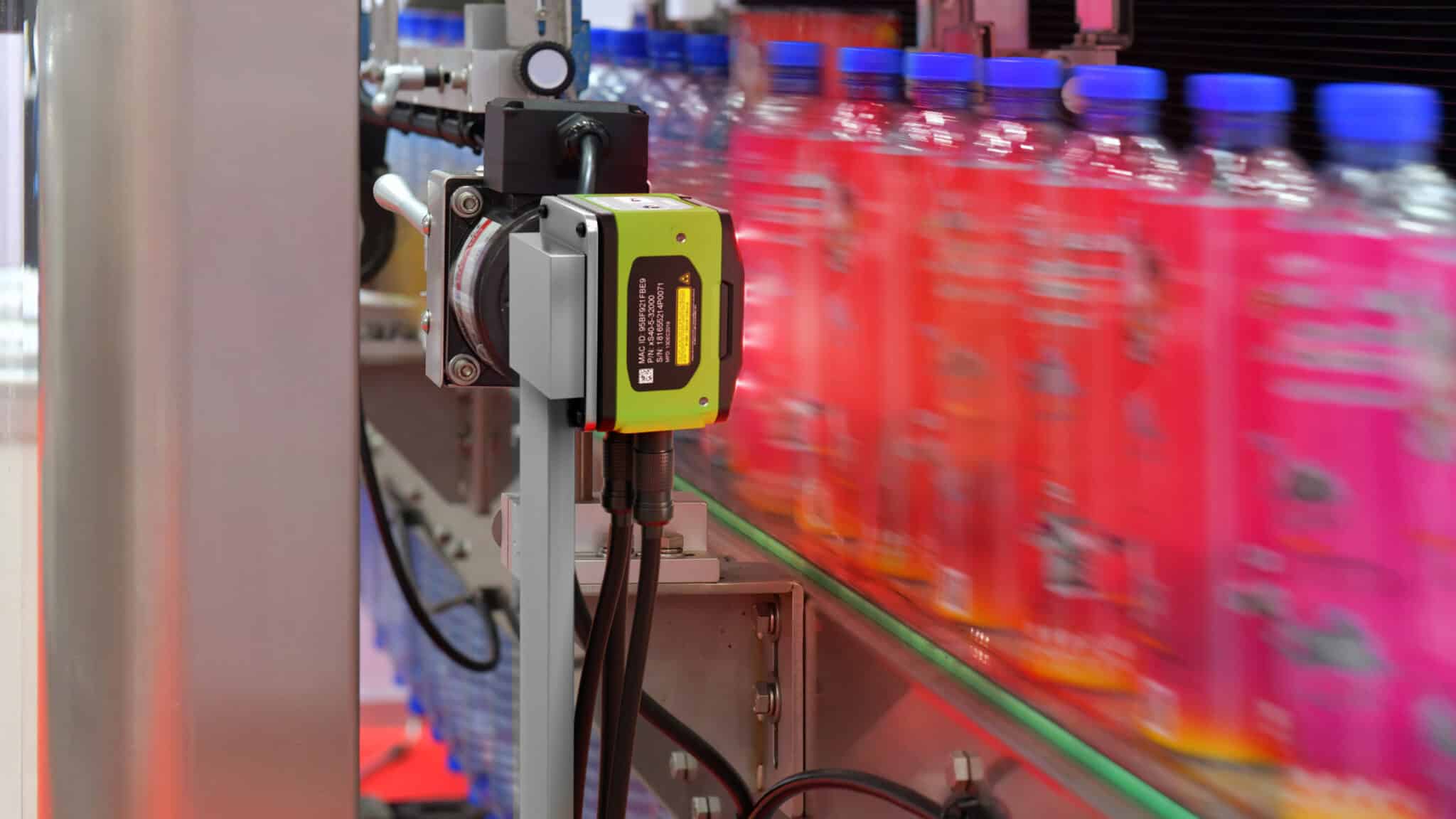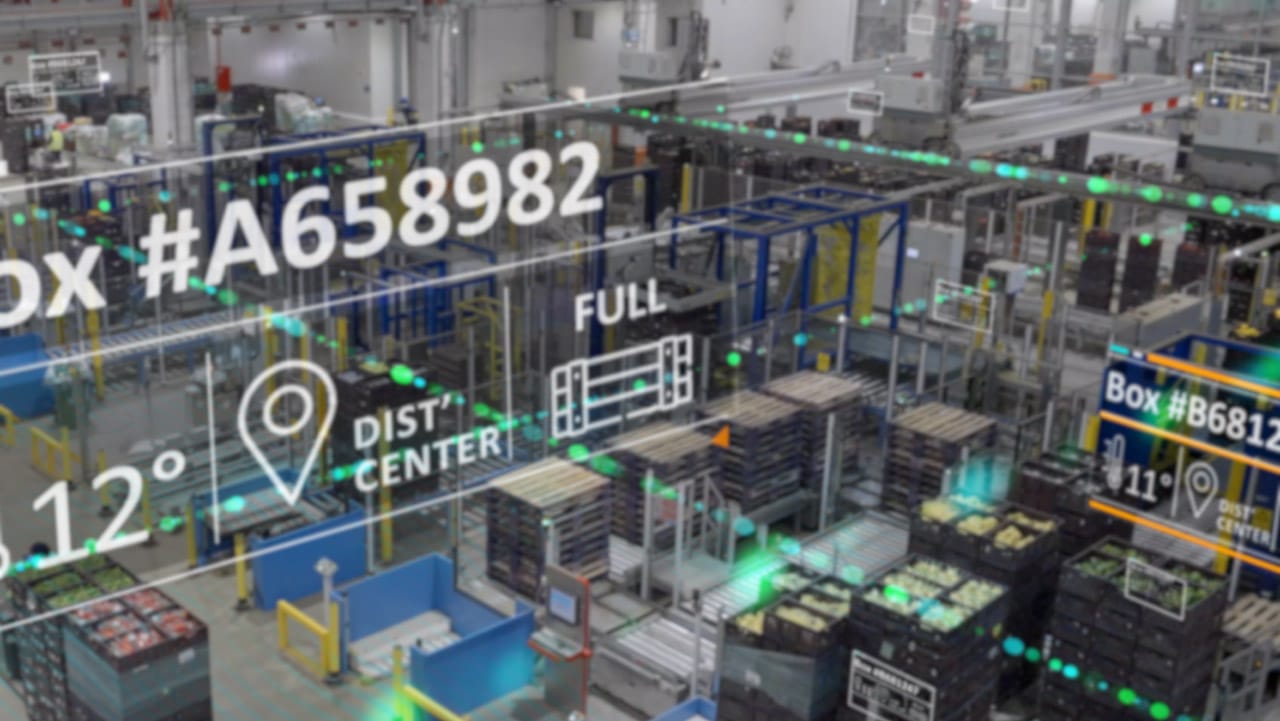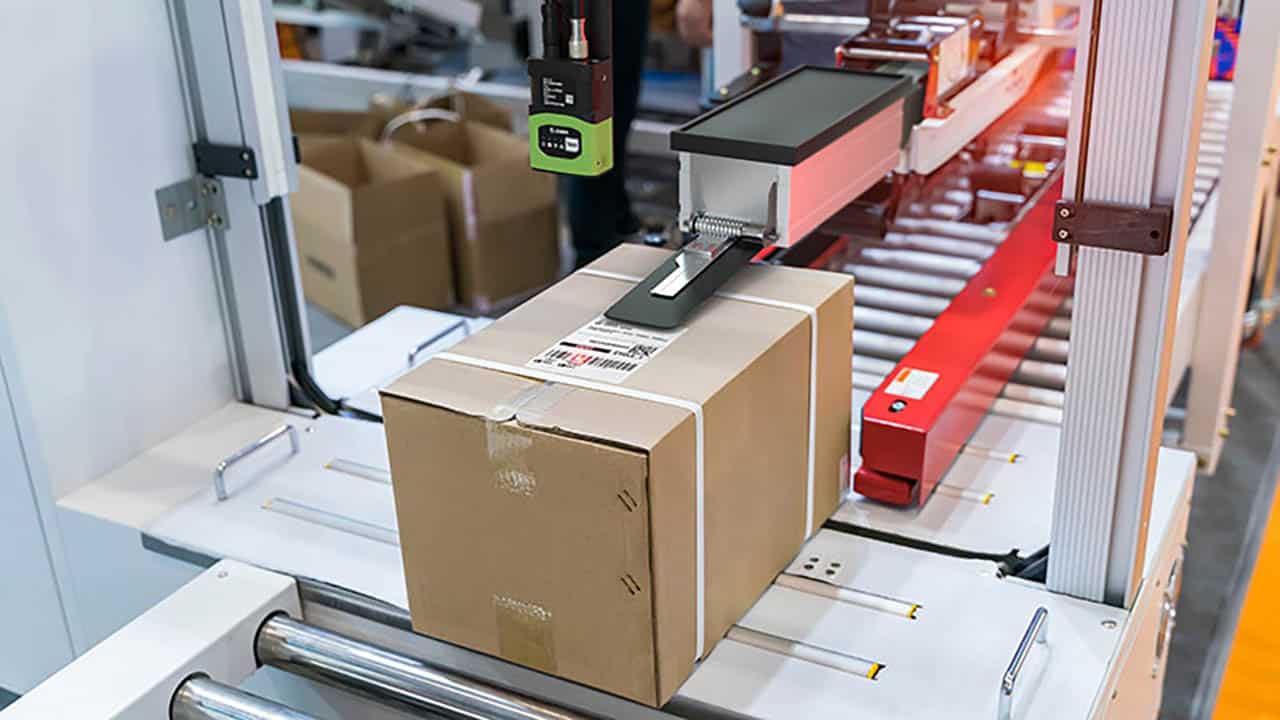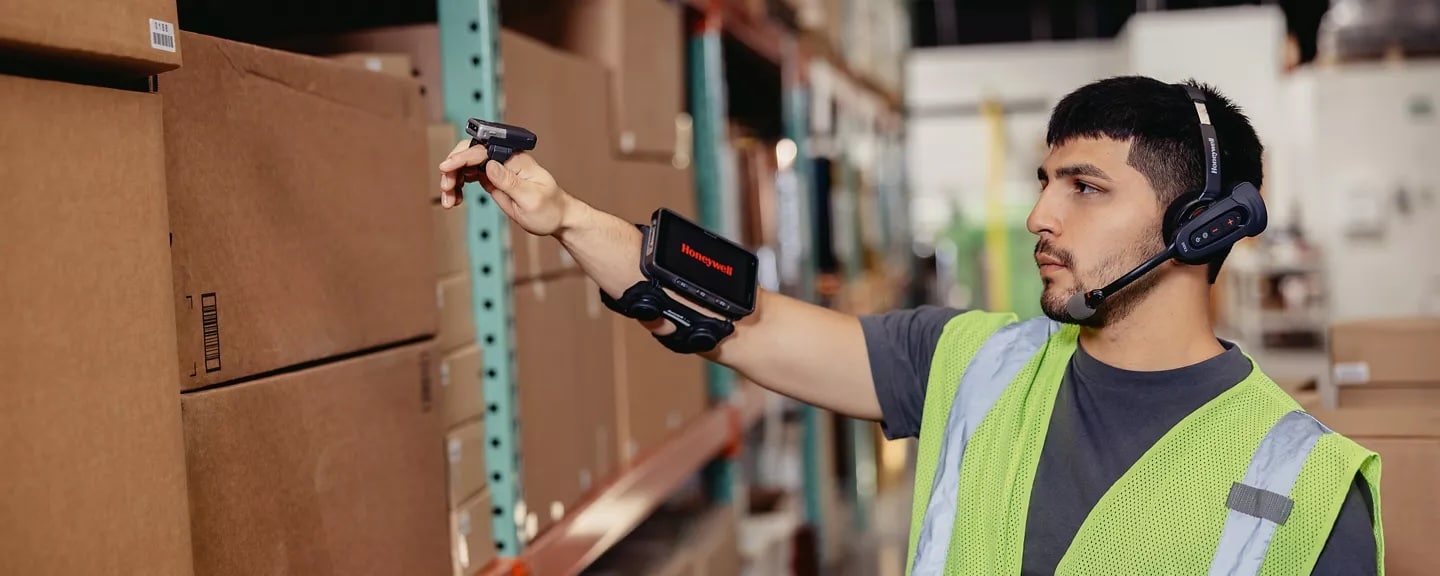Barcode label printing is part of a cost-effective barcode system that allows businesses to manage inventory, track assets, and maintain efficient supply chain operations. For small-to-midsize businesses looking to implement barcoding for the first time, or make existing barcode printing operations more efficient, choosing the right barcode printer for your application will prevent headaches, improve reliability, and avoid unnecessary spending.
How a Barcode Printer Can Help
Is your business already generating barcodes? Are you using a standard office printer to print barcodes on sheets of labels? While this may serve your needs in the short term, if you plan to grow your business and sell or distribute to anyone outside your organization, a standard office printer or laser printer is typically not a cost effective solution.
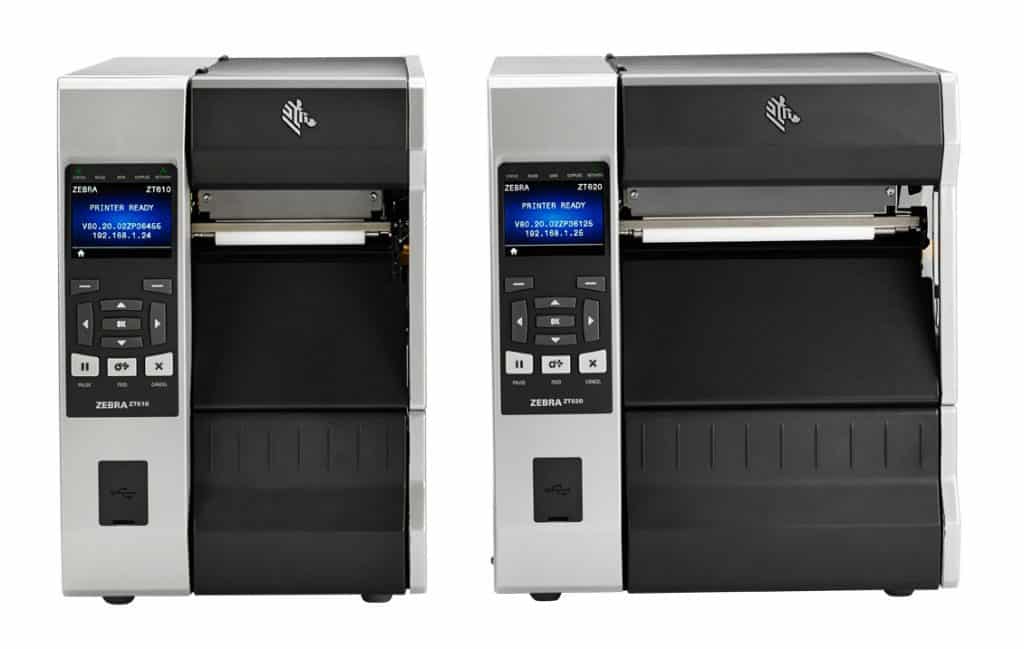
Features to Consider
Reliability. Barcode printers are designed to print large quantities of high-quality labels, and as your business grows, so will your print volume. Compared with a laser printer, a barcode printer will experience less downtime and require less maintenance and repair at higher print volumes.
Efficiency. Standard office printers often require you to print an entire sheet of labels at one time; however, printers work more efficiently when printing one label at a time. Barcode printers are designed to make more efficient use of labels and supplies than office printers.
Cost. Because they operate more efficiently, barcode printers are a more cost-effective option than office printers. Barcode printers use rolls of labels, which are less expensive than sheets of labels. With a lower cost of supplies and reduced risk of downtime, barcode printers can also save money by preventing lost productivity.
Quality. Investing in the right printer can ensure high-quality barcodes, which reduces the risk of unreadable labels, chargebacks and downtime for your business.
The first step in selecting a barcode printer is to determine what your barcode label will be used for, and what surface it will adhere to. Are you printing shipping labels for boxes, small labels for delicate items such as jewelry, or waterproof labels for shampoo bottles? Think about the elements that your labels will need to withstand, and use the following points as a guide.
1. Resistance
What will your label need to resist? Labels are subjected to a lot of wear and tear and may be exposed to a variety of elements that can affect print quality.
Chemicals – Will your label need to be resistant to contact with certain chemicals? Will it be exposed to oil, grease, alcohol, cleaning solvents, or other chemicals that may damage the printed barcode?
Light – Will your labels be exposed to UV or fluorescent light, which can fade images quickly?
Abrasions – What kind of contact, rubbing or scrapes will your label encounter? These actions can wear down the image on the label.
Label Material
Understanding label resistance will determine the type of label material you need. While simple paper labels will work for general-purpose applications such as shipping and shelf tags, polypropylene or synthetic labels will be required for durable, high-resistance applications. The label material will also determine whether you need a thermal transfer or direct thermal print method, which we’ll discuss more below.
2. Environment
In what type of environment will your labels be used? Environmental factors can affect print durability, label adhesive, and whether you need a desktop or industrial printer.label on chemical container
Outdoors – Will your labels be used outdoors in rain, sun, heat or extreme cold?
Covered outdoors – Will your labels be semi-protected from the elements, such as under an awning?
Extreme temperature – Will your labels need to withstand freezers or ovens? Is the label being applied in a freezer, or before it gets to the freezer? Is the application temperature different from the storage temperature?
Moisture – Will your labels be applied or stored in a humid environment?
Industrial vs. Desktop Printers
In addition to label considerations, will your printer be used in an office environment or in an industrial setting? If your printer will be used in a warehouse or distribution facility where it will be exposed to dust, dings and everyday wear-and-tear, an industrial barcode printer will be the best choice. On the other hand, if you are printing barcodes in a clean, controlled office environment, a desktop printer may meet your needs. For small to medium light-industrial printing operations, mid-range printers offer durability and ruggedness at a lower price point than industrial barcode printers.
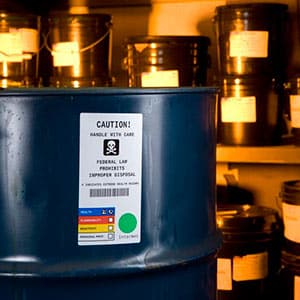
3. Surface
What surface will your labels adhere to? This will determine the right label adhesive.
Is the surface curved or flat? Rough or smooth?Barcode label on test tube
What is the material? For example, corrugated, metal, glass, paper, plastic, wood?
Label Adhesive
The surface characteristics will determine the type of label adhesive that will work best for your application. Some of the most common adhesive types are permanent, removable, freezer and high-tack. Permanent adhesive is typically used on surfaces where the label will not need to be detached, whereas removable labels work well when labels need to be transferred from one surface to another. If you are labelling frozen items, are you applying the label before or after the item is frozen? The application temperature will affect moisture and condensation, and freezer labels use a special cold-temp adhesive designed specifically for cold temperature applications. High-tack labels are best for rough or textured surfaces such as tires that require durability and high resistance to outdoor elements.
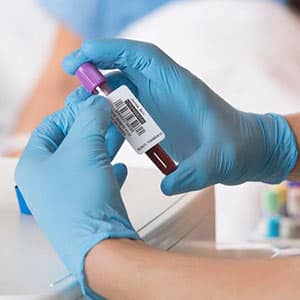
4. Size
What size label do you need? Do you need small labels for jewelry tags, or larger shipping labels? The size of your label will determine printhead size and printer dpi. Larger labels require larger printheads, and vice versa. Additionally, small labels require higher print resolution to preserve barcode quality at a smaller size, which means you need a printer with higher dots per inch (dpi).
Standard Label Sizes
Using a standard label size will be the most cost-effective approach. Common barcode label sizes include, in inches, 4 x 6, 1 x 2, 1 x 3, and more. Custom labels are more expensive, and you will pay die charges for custom sizes. You will also pay more for pre-printed graphics and Logos on your labels.
What is Your Print Volume?
Your print volume will determine whether you require a low, medium or heavy-duty barcode printer. How many labels does your business print per day? Per week?
While there is not a universally accepted definition of print volumes, here are general guidelines of low, medium, and high that can help you evaluate your needs.
Low-volume printing typically refers to fewer than 100 labels per day or around 500 per week.
Common applications include basic inventory control and asset tracking related to asset management, warehousing and inventory applications. Desktop printers work well for low-volume printing operations, and offer a cost-effective way to get started with barcode printing.
Medium-volume printing is usually around 100-300 labels per day. Typical applications include asset management, warehousing, inventory, ticketing, delivery and service applications.
The Honeywell PD42 desktop printer is ideal for medium-duty applications.Honeywell PD42 Printer
High-volume printing is considered more than 300 labels per day. This type of barcoding operation is typically found in larger companies with multiple warehouse locations that require high-end thermal transfer printers capable of working around the clock.
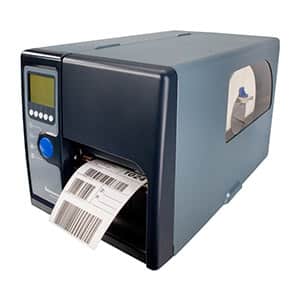
What are Your Customers’ Requirements
What is the Life of Your Label?
How long does your label need to last? If you’re shipping an item to a reseller, how long will it sit on their shelves? What is their environment – indoor, outdoor, high humidity? What will the label be exposed to after it leaves your facility? The answers to these questions should be considered along with your application requirements. The life of your label will also determine which print method is best for your application.
Which Print Method is Right for You?
In general, there are five different print methods: laser, dot matrix, ink jet, thermal transfer, and direct thermal. For barcode printers, thermal transfer and direct thermal are the most commonly used print methods because of their ability to consistently print durable, accurate barcode images. If you are looking to print high-quality color graphics and not barcodes, you may not require a printer designed specifically for barcode images.
Both thermal and direct thermal printers use a thermal printhead to apply heat to the label surface.
Direct thermal (DT) printers apply heat directly to specially coated labels, which blackens the surface of the label to produce the image. These printers are a cost-effective option because they do not use ribbon, toner or ink; however, they require labels specifically designed for direct thermal printers. Direct thermal printing work best for labels with a short lifespan, such as shipping labels, receipts, tickets and other indoor applications. Direct thermal images can fade if exposed to too much heat and sunlight, and typically have a lifespan of around six months.
Thermal transfer (TT) printers apply heat to a ribbon, which then melts ink onto the label surface. Thermal transfer printing can be used for a variety of materials, from general-purpose to industrial-grade labels that require long-term use, such as asset tags and product labels.
Labels and Ribbon
Thermal printers can be used to produce high-quality barcode images on different types of labels. Different label materials require different ribbon types for optimal print quality and longevity.
Here are examples of ribbon types for different label materials:
Label Material | Ribbon Type | Common Applications |
Paper labels | Wax | Indoor asset or product labels, shelf or location tags |
Polypropylene | Wax and resin | Shelf or location tags, wristbands for outdoor use |
Polyester/synthetic | Resin | Outdoor labels |
Do You Need Unique Labels for Your Application or Industry?
Does your business need to print receipts, wristbands, or tickets? Printers designed specifically for these applications offer an efficient way to produce barcodes for a specific use case.
Ticket printers – Tickets are typically printed on a continuous sheet of perforated cardstock with either notches or blackmark stripes between each ticket. Ticket printers use the notch or stripe as a sensing mark to determine top of form for accurate printing of each individual ticket.
Receipt printers – Ideal for direct store delivery (DSD), mobile receipt printers allow field service or delivery personnel to print receipts and invoices on the go. Also available in a stationary clamshell receipt printer option, receipt printers typically only print receipts, and not labels.
Mobile printers – In warehouse environments, mobile printers can be used to reprint and replace damaged labels. Mobile printers also offer a wireless, efficient way to relabel items that have been upgraded or refurbished. Typically, mobile printers are used to print small quantities of labels and very few devices print both labels and receipts.
Wristband printers – To track people or patients, a wristband printer is an efficient way to print individual barcodes. For hospitals and healthcare environments, wristbands and printers are available with an antimicrobial casing.
Desktop printers – A desktop barcode and label printer is ideal for offices and retail environments that require high-quality printing at low-to-medium print volumes.
Industrial barcode printers – A good option for high-volume printing, industrial barcode label printers offer a durable design for demanding applications such as asset management, shipping and receiving, manufacturing and more.
What Printer Connectivity Should You Choose?
Barcode printers must be connected to a computer to receive print requests. The most common type of connectivity is USB, and while almost all PCs and laptops have a USB connection, newer models have fewer ports and more wireless options. Older computers may even use serial or parallel connectivity, but when purchasing a new barcode printer, look for USB and Ethernet or Wi-Fi. Multiple connectivity options provide more flexibility to integrate your printer into your environment.
Industrial table-top style printers typically include USB or serial, Ethernet and an option for Wi-Fi. Even if you aren’t using USB to connect your printer to a computer, USB is still beneficial because it allows you to plug the printer into a keyboard or use an external flash drive. A handheld scanner can also be plugged into a printer via USB. Some printers include multiple USB ports as well.
Desktop printers commonly include USB, Ethernet or Bluetooth.
Mobile printers use Bluetooth or Wi-Fi, but can also include a USB port.
Industrial Barcode Printer Checklist
When evaluating different printers, keep this checklist handy to help you ask the right questions before making a purchase.
What is your print volume?
- Low
- Medium
- High
What are your application requirements?
Consider:
- Resistance
- Environment
- Surface
- Size
How long is the life of your label?
- Less than six months
- More than six months
What print method do you need?
- Thermal transfer
- Direct thermal
What type of connectivity should you consider?
- USB
- Ethernet
- Bluetooth
- Wi-Fi
Whether you’re looking for a small barcode printer for a low volume operation, or multiple machines to complete a high-volume labeling operation, our team at Peak Technologies can help. Take a look at the labeling solutions we offer, or browse our barcode printers here.







